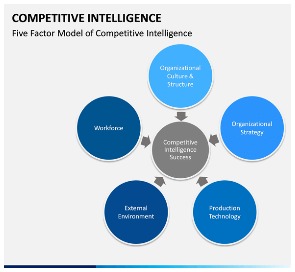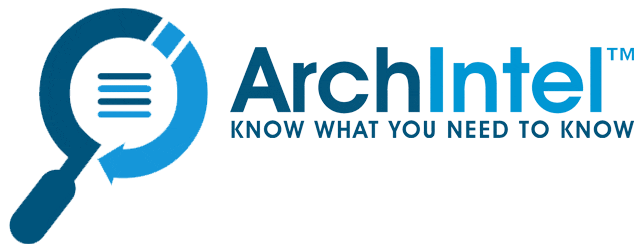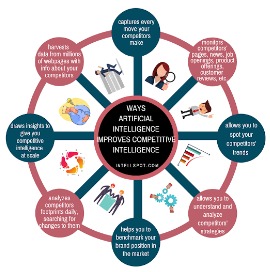Vishal Gupta, global chief technology officer (CTO) and senior vice president with Unisys, recently spoke with ArchIntel, as a part of its ‘Competitive Intelligence Spotlight’ series, regarding the models used for competitive intelligence, how to find and train talent, as well as the common challenges and lessons learned he has faced throughout his career. He also focused on the ethical implications inherent in the competitive landscape and how to determine where the marketplace is headed in the future.
“Being ethical and having integrity is critical. Speaking to leaders within your sector becomes important. You have to be in the competitive intelligence sector for the long haul, and to do so, you have to be very ethical at what you do.”
ArchIntel: What are some of the significant lessons you’ve learned throughout your career in competitive markets?
“Throughout my career, I’ve learned three significant lessons. One is that in order to conduct competitive intelligence, you have to know what is important for your business. You have to really understand, from a client perspective, their stated and unstated needs. Without understanding those needs, you don’t know who the competition is and how to do any competitive intelligence.
The second lesson I’ve learned is that you have to think about where the puck is headed. While you may have a set of competitors and strategies, the market is continually evolving, which will yield a new set of perspectives and provide insight to what will be to be important to those clients from those competitors.
While it’s essential to know where markets are today, it is equally as important to understand where they’re headed, which requires deep analytical thinking.
The third lesson is from John Chambers, former CEO of Cisco Systems, who said that the most important thing to understand is the technology transitions and how it’s not too early or too late. He added that is what will really change from the macro technology perspective, which will then drive your competitive perspective.
For example, you may have a very strong competitor in the 5G network, which is their delivery focus. If I try to enter the field, it is going to be very late for adoption, versus being the king of a brand new offering.”
ArchIntel: How do you balance the increase of emerging technology with human resources in conducting competitive intelligence? 
“This is where you want to learn from other industries. With competitive and collaborative analysis you have to gauge its presence in the enterprise space and the consumer space to see how people are using it, because there’s a lot of consumerization that happened with technology as well.
For example, when Google Photos was launched we could see that they categorized all of the users’ pictures, and suddenly enterprises began to adopt that technology. On the emerging technology perspective, instead of thinking about the entire market, or macro data, you need to consider the values that drive a client.
For example, we do a lot of work in security and we realize things are very complex. We became one of the early users of AI in our microsegmentation industry. We have used AI to take some of the complexity out of mundane processes. When we discovered that data will use AI to automatically categorize information, we were ahead of the curve in our industry.
That does not mean we’re ahead in all industries. Within a particular product line, you have to think through the competition in a broader context as opposed to a very narrow mindset in order to identify competitors, which is helpful in creating competitive barriers.”
ArchIntel: What are some of the most common challenges you face within competitive intelligence?
“I’ve faced three larger, recurring challenges. One is thinking through public versus private sources of data. With the internet, there is almost too much data available to determine what’s important and what’s not. Then, being able to think through and figure out your primary and secondary sources to determine the key data for decision makers can be difficult.
Another key challenge in competitor analysis is categorizing fact vs. fiction. That requires that you first analyze the important data, then pose your analysis to clients and decision makers. You will see publicly-available data on many competitors, but then you have to build a competitive analysis or an offering to say here is how we compared to the speeds and feeds.
You have to find what’s really important, what use cases are going to make or break tags and then how are those getting the load by different players and industry.”
ArchIntel: How do you find and train a competitive intelligence workforce?
 “At Unisys, the majority of our competitive intelligence is done by our marketing team. We also get insights from analysts, so it’s important to incorporate a scaled perspective. One of the characteristics we look for is critical thinking. There is a deluge of information, but being able to summarize that information is what’s really key in terms of decision factors and being able to compare and contrast.
“At Unisys, the majority of our competitive intelligence is done by our marketing team. We also get insights from analysts, so it’s important to incorporate a scaled perspective. One of the characteristics we look for is critical thinking. There is a deluge of information, but being able to summarize that information is what’s really key in terms of decision factors and being able to compare and contrast.
The second is the analytical skills to see how different players compare across the market. That is going to be top of the mind for a customer. I would also look for intellectual curiosity, because you want people who are constantly learning. We promote continual learning and thinking so we see the changes in the market. Then you can almost predict the moves as opposed to just see what moves are.”
ArchIntel: How do ethics affect data collection, and what are the differences in the public and private sector?
“That’s a very important and critical area because you always want to make sure that the information that you’re collecting is done correctly, has integrity and was collected in an ethical way. This is where I feel market understanding becomes even more important sometimes because once you fully understand the market, then you know which pieces are really important.
You will then be able to sharpen your focus on a few things that really matter. This is a place where a lot of research is needed. You need to talk to the clients and potentially buy some competitive value props.
You have to be honest that you are who you are or sometimes you have to retain third party companies who have more ability to do those things than you do. It’s very important to stay on the right side of the tracks and treat others just like you would like to be treated.
This is where it’s hard, in terms of doing that level of research and analysis to say what’s important and what’s changing with what is publicly available. Developing a relationship with clients where they can be transparent and hear their perspective is vital. There are other teams that are there for example Gartner is something called peer insights. These sites will actually give lots of data on who the clients are within a particular offering.”
ArchIntel: How useful is Porter’s Model in building an effective strategy?
“Porter’s Model looks for buyer power, supplier power and industry forces to show where the industry is headed. It’s useful from that perspective because it defines your market, versus focusing on the enterprise side, where you have thousands of companies and much more freedom.
The model is useful to the broader forces to understand how this industry will look in the future, but it may not necessarily predict how each competitor will do. It gives you one set of length in terms of macroeconomic forces.
However, the model doesn’t always take into account how the technology transitions are happening. It’s very hard to predict how technology will shift the market and change the competitive landscape. Technology has become a very big driver of profitability of competitiveness.”
ArchIntel: How does horizon scanning help scout new competitors?
“Horizon scouting for new competitors is the most useful in scenario analysis or gaming, based upon what the needs are and how the market is evolving. It shows you who is most likely to enter this market, which can help you predict who has energy efficiency.
From an agency perspective, it helps define your clients. Horizon scanning is more around the access to the client. By doing scenario analysis and competitive gaming, you can predict who’s most competitive and who will try to enter a market as an unconventional player.”



